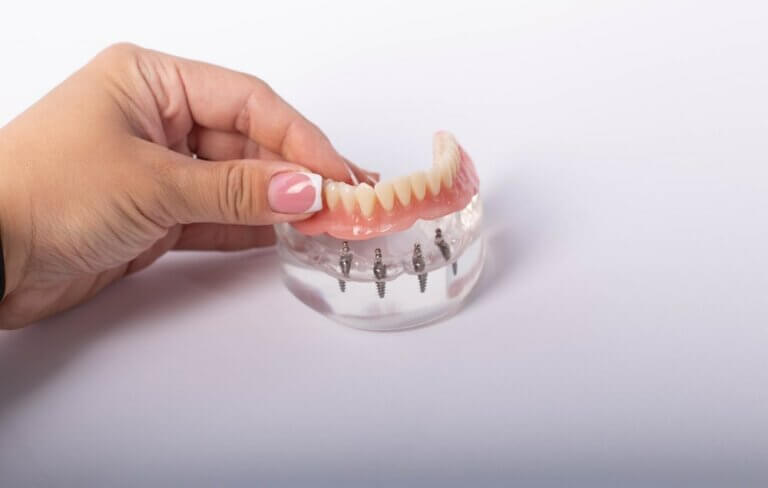What Are Implant Supported Dentures?
If you’re dealing with multiple missing teeth, your dentist might suggest opting for implant-supported dentures. Unlike traditional dentures that sit on your gums, these dentures are securely attached to your jawbone using dental implants, providing stability and preventing any unwanted slipping.
How Many Implants Will Hold My Lower Denture?
That was the question of the week for my new patient, a new denture wearer. He lost his teeth in June and received his dentures.
As we often see, he managed with the upper denture, but the lower was a struggle. He came to me to seek help to create stability for his lower denture, resulting in better chewing and more confidence.
It all Depends on The Jawbone
An important factor influencing the number of implants I can place for my patient is the availability of a good and adequate jawbone.
The height and width of the bone vary from mouth to mouth. Just as none of us look alike except twins, our jaws are different, too. Age, sex, and how long the teeth have been gone all play a role in what presents itself to me. Which jaw we will treat can also play a role in determining the ideal or the minimal number of implants required.
With that in mind, let us answer my patient’s question and focus on his lower denture.
A Minimum of Two Implants Are Needed But Ideally Four
I was once asked if one implant could hold a whole set of teeth. After all, we call the discipline implant dentistry, and the word “implant” is singular.
Imagine trying to sit on a one-legged stool. If even that were possible, you would find yourself moving all over and struggling to find balance and stability. The stress placed on the single leg of the stool could result in the stool leg fracturing. A lower denture with minimal stability to start would not function properly with a single implant.
The minimum number of implants to help a patient with a lower denture is two. You do not need an implant for every tooth on the denture. We need enough to create a solid base for the teeth.
Returning to our stool analogy, we know four legs create wonderful stability and a solid grounding. So here, too, four implants would be ideal in the mouth.
However, due to jaw limitations, I may be unable to place four implants throughout the mouth, with two in the front area and two in the back.
Often, I only have enough area to work in front of the mouth. Since two implants will work, then I should place two implants. Although that seems logical, I always want to future-proof a procedure and do my best to ensure that the care I deliver lasts the longest, ideally forever.
Three is Better Than Two
With that in mind, three implants at the front of the mouth will function better than two.
The reason for that is twofold.
First, when there are three implants, there is no or minimal movement of the denture front to back, as there can be with only two implants. The second reason is that if, for some reason, a person gets an infection and loses an implant, the denture can work with only two, so we don’t have to redo the entire case.
Every Case Is Unique – Schedule an Appointment Today
There is a lot to talk about, and everyone is different. The way to find out your best solution is to pick up the phone and call Nikki or Jamie at 440.951.7856 for a visit. As always, I look forward to meeting you as I strive to find your best solution. As always, I look forward to meeting you and, above all, helping you.
Jeffrey Gross, DDS, FAGD is an Ohio licensed general dentist and is on the staff of Case Western Reserve School of Dental Medicine.

